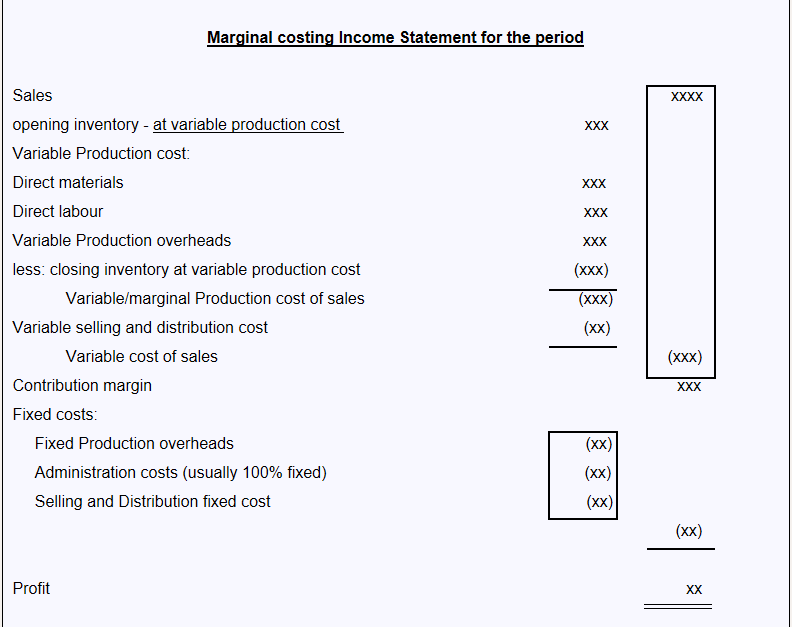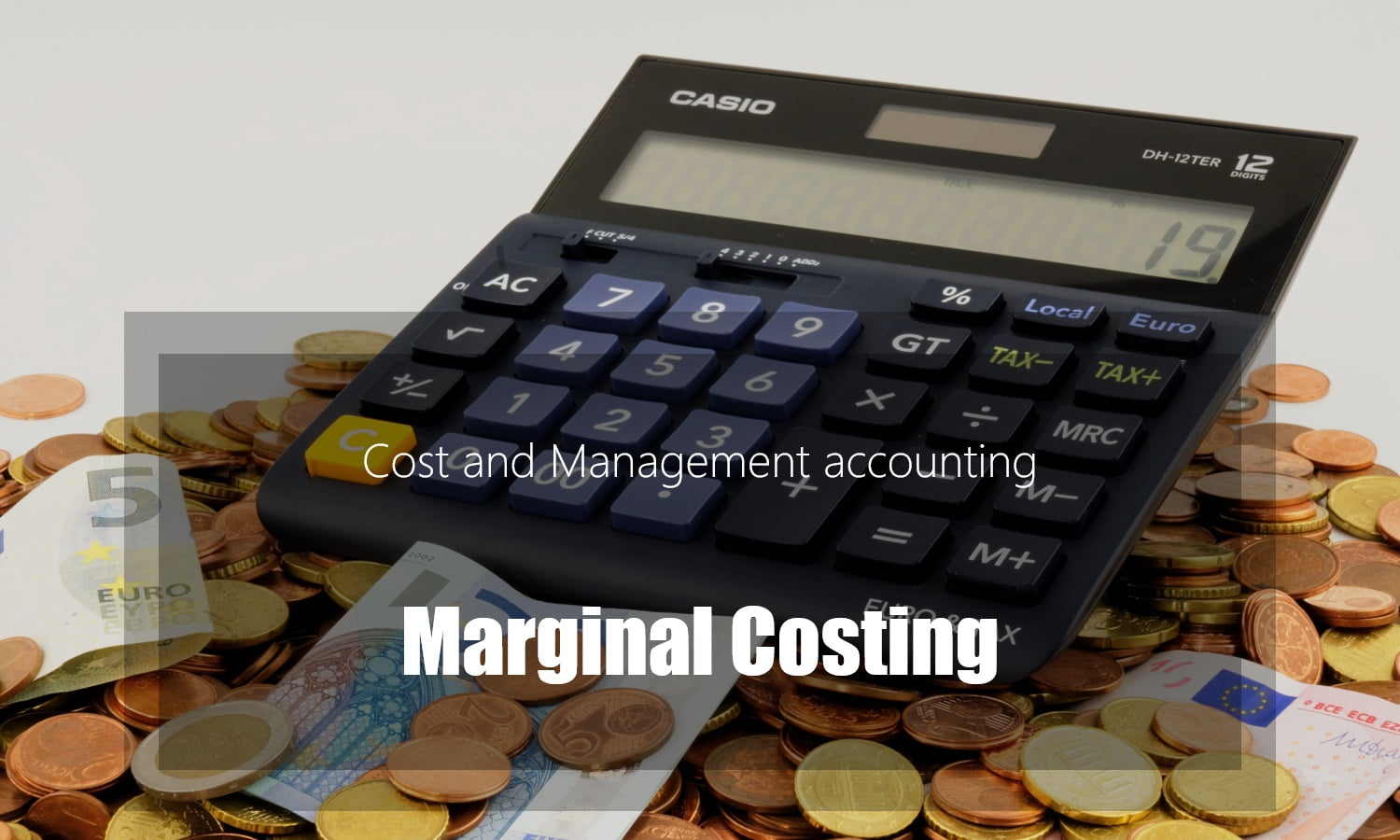Read more
- Introduction to Cost and Management Accounting
- High/Low and Linear Regression Analysis
- Inventory Management
- Accounting for Inventory
- Accounting for overheads
- Absorption Costing
- Marginal Costing
- Job Batch and Service costing
- Process Costing
- Target Costing
- Variances
- Standard Costing
- Cost Volume Profit analysis
- Relevant costing and Decision-Making Techniques
- Time Value of Money (TVM)
Marginal Costing Overview
In marginal costing fixed production overheads are not absorbed into products costs.
The main uses are; planning, forecasting and decision making.
Assumptions in marginal costing:
- The variable cost per unit is a constant value.
- Fixed cost are costs that remain same in total in each period.
- Costs are either fixed or variable costs. Mixed costs can be separated into a variable cost per unit and a fixed cost per period.
- It is a key concept in marginal costing.
- Contribution therefore means; contribution towards covering fixed costs and making a profit.
- If total contribution fails to cover fixed costs there is a loss.
Contribution = Sales – variable costs
Total contribution – fixed costs = Profit
Reporting profit with Marginal Costing
- In a marginal cost system the opening and closing inventory is measured at its marginal cost. The cost per unit only includes the variable costs of production.
- Profit is measured by comparing revenue to the cost of goods sold in the period and then deducting other expenses.

| Advantages | Disadvantages |
|
|
Comparison between Absorption costing and Marginal costing
- The profit calculated with marginal costing is different from the profit calculated with absorption costing.
- The difference in profit is due to entirely to the differences in the inventory valuation; as in absorption costing inventory cost includes a share of fixed production overheads i,e opening inventory contains fixed production overheads incurred in last period which is written off in the current period and closing inventory contains fixed production overheads that was incurred in this period but carried forward to be written off in the next period.
- When there is no change in the opening and closing inventory, exactly same profit will be reported using marginal costing and absorption costing.
| When there’s an Increase in inventory | When there’s a Decrease in inventory |
(i,e closing inventory is greater than opening)
|
(i,e closing inventory is greater than opening)
|
Profit Reconciliation: Between Absorption and Marginal costing
To calculate the difference between reported profit using marginal costing and the reported profit using absorption costing make follow simple calculations:
Step I
- Calculate increase/decrease in inventory during the period in units:(opening inventory absorption & marginal minus closing inventory absorption marginal).
Step II
- Calculate fixed production overhead cost per unit.
Step III
- The difference in profit is the increase or decrease in inventory quantity multiplied by the fixed production cost per unit.

Leave a Reply
You must be logged in to post a comment.